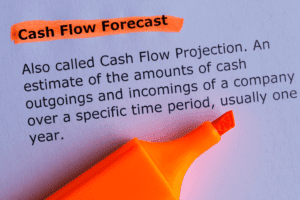
This implies that debt financing rather than equity funds a significant portion of Apple’s total assets. Verizon’s equity multiplier of 4.41x shows they rely more on equity than debt for financing. Investors should be cautious of high ratios in the equity multiplier. These ratios can have a significant impact on a company’s financial performance and risk.

The term equity multiplier refers to a risk indicator that measures the portion of a company’s assets that is financed by shareholders’ equity rather than by debt. The equity multiplier is calculated by dividing a company’s total asset value by the total equity held in the company’s stock. A high equity multiplier indicates that a company is using a high amount of debt to finance its assets. A low equity multiplier means that the company has less reliance on debt. The equity multiplier is also known as the leverage ratio or financial leverage ratio and is one of three ratios used in the DuPont analysis. Equity multiplier is a leverage ratio that measures the portion of the company’s assets that are financed by equity.
How to Calculate Equity Multiplier Ratio?
As we mentioned above, equity multiplier only provides a snapshot of a company’s financial leverage at a single point in time. To get a more complete picture of a company’s leverage, you would need to calculate equity multiplier over multiple periods of time. It’s important to note that equity multiplier only provides a snapshot of a company’s financial leverage at a single point in time. High the equity multiplier is equal to equity multiplier indicates a higher degree of financial risk, since the company is more reliant on debt financing. Low equity multiplier indicates a lower degree of financial risk, since the company is more reliant on equity financing. By considering the equity multiplier alongside industry benchmarks, investors can gauge the company’s financial competitiveness and potential for growth.
These filings include a vast amount of financial information in which the inputs for EM can be found. A lower ratio is more attractive but does not always signify a better option. An EM is only seen as high or low compared to averages in the industry, historical standards, or company peers. A smart balance sheet approach considers the right mix of money and borrowing to achieve stability and maximize profits. Get stock recommendations, portfolio guidance, and more from The Motley Fool’s premium services.
Why is this metric essential for investors?
Due to the nature of its business, Apple is more vulnerable to evolving industry standards than other telecommunications companies. On the other hand, Verizon’s multiplier risk is high, meaning that it is heavily dependent on debt financing and other liabilities. The company’s proportion of equity is low, and therefore, depends mainly on debt to finance its operations. Equity multiplier is also known as financial leverage ratio or leverage ratio.
- The equity multiplier illustrates how both debt and equity fund a company’s assets.
- We can point to the Federal Reserve as another big risk if inflation starts to rear its ugly head again, which may cause the market to price in fewer rate cuts during 2024.
- The equity multiplier is calculated by dividing a company’s total asset value by the total equity held in the company’s stock.
- In this case, the balance sheet is also the sum of total assets.
- It’s evident that ABC Company is the least appealing of the two companies.
- A high equity multiplier typically indicates that a large portion of the company’s assets are financed by debt rather than equity.
For our illustrative scenario, we will calculate the equity multiplier of a company with the following balance sheet data. In general, lower equity multipliers are better for investors, but this can vary between industries and companies with particular industries. In some cases, a low equity multiplier could actually indicate that the company cannot find willing lenders; or it could also signal that a company’s growth prospects are low. 1) To increase the equity multiplier through increasing debt, a company can take on more debt. This will increase the numerator of the equity multiplier equation, while keeping the denominator (equity) constant. In order to calculate the equity multiplier, you must know the valuation of the company, the amount of money you invested, and the percentage of ownership.
Relationship between debt ratio and equity multiplier
This website is using a security service to protect itself from online attacks. There are several actions that could trigger this block including submitting a certain word or phrase, a SQL command or malformed data. Take your learning and productivity to the next level with our Premium Templates. Access and download collection of free Templates to help power your productivity and performance.

You might think of the equity multiplier as a single actor on a larger stage of financial ratios. Knowing how this actor interacts with others like debt ratio, return on equity (ROE), and DuPont analysis can give you a richer understanding of a company’s financial performance. The equity multiplier is also an important factor in DuPont factor analysis, which is a method of financial assessment devised by the DuPont Corp. for the purpose of internal review. The DuPont model breaks return on equity (ROE) into its constituent pieces, which are popular financial ratios and metrics. Net profit margin, asset turnover and the equity multiplier are combined to calculate ROE, which allows analysts to consider the relative of each impact separately. If ROE changes over time or diverges from normal levels for the peer group, DuPont analysis indicates how much of this is attributable to financial leverage.

0 Comment